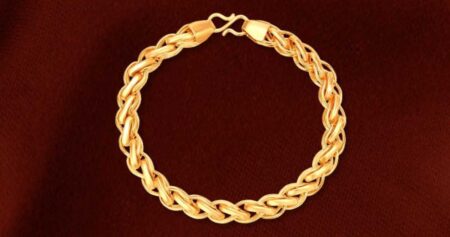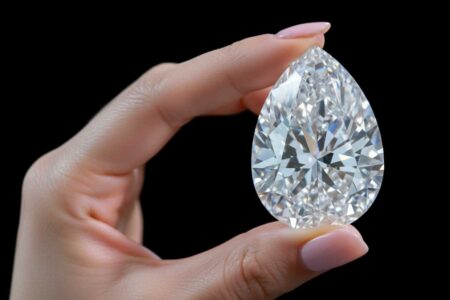The diamond landscape has dramatically shifted in recent years, with synthetic diamonds emerging as a revolutionary alternative that challenges traditional notions about luxury gemstones. Today’s discerning consumers are discovering that laboratory-created diamonds offer unprecedented advantages that extend far beyond simple cost savings. From technological precision to environmental responsibility, understanding the compelling benefits of lab-grown diamonds reveals why millions of jewelry buyers are making the switch to these scientifically advanced gems.
Superior Value Proposition
Exceptional Price Advantage
Laboratory-created diamonds deliver extraordinary value by offering premium quality at significantly reduced prices compared to earth-mined stones. Consumers typically save 70-90% when purchasing lab-grown diamonds of equivalent size, cut, color, and clarity grades, allowing them to acquire larger, more impressive stones within their budget constraints.
This remarkable price differential stems from the streamlined production process that eliminates costly mining operations, extensive transportation networks, and multiple intermediary markups. The controlled laboratory environment enables efficient production without the geological lottery that affects natural diamond formation, resulting in consistent pricing that reflects actual production costs rather than artificial scarcity.
The savings extend beyond the initial purchase, as lab-grown diamonds maintain their beauty and structural integrity identically to natural stones, ensuring long-term satisfaction without compromising quality or durability. Smart consumers recognize that identical physical properties at fraction of the cost represents unmatched value in the luxury market.
Accessible Luxury Experience
Lab-created diamonds democratize luxury by making high-quality diamonds accessible to broader demographics without sacrificing prestige or beauty. Young professionals, first-time buyers, and budget-conscious consumers can experience the magnificence of premium diamonds that would otherwise remain financially out of reach.
This accessibility doesn’t diminish the luxury experience – lab-grown diamonds exhibit identical fire, brilliance, and scintillation that create the captivating visual impact associated with fine diamond jewelry. The emotional significance and symbolic meaning remain unchanged, while the practical benefits enhance overall satisfaction with the purchase decision.
Environmental Stewardship
Minimal Ecological Footprint
The environmental advantages of synthetic diamonds represent one of the most compelling reasons to choose lab-grown diamonds for eco-conscious consumers. Traditional diamond mining requires massive earth excavation, often disturbing hundreds of acres for each carat recovered, while laboratory production occurs within controlled facilities with minimal land use.
Water consumption provides another stark contrast – mining operations can require thousands of gallons of water per carat, often in regions where water scarcity affects local communities. Laboratory diamond synthesis uses precise amounts of water in closed systems, dramatically reducing consumption while eliminating contamination risks associated with mining runoff.
Carbon emissions from lab-grown diamond production continue decreasing as manufacturers invest in renewable energy sources. Many facilities now operate on solar, wind, or hydroelectric power, making their carbon footprint negligible compared to the diesel-powered equipment and transportation networks required for traditional mining operations.
Ecosystem Preservation
Laboratory diamond production prevents habitat destruction and wildlife displacement that frequently accompanies large-scale mining operations. Protecting biodiversity and maintaining natural ecosystems represents an increasingly important consideration for environmentally conscious consumers who understand the connection between their purchasing decisions and global environmental health.
The absence of mining waste, including tailings ponds and processing chemicals, eliminates long-term environmental contamination risks that can persist for decades after mining operations cease. This clean production model ensures that lab-grown diamond manufacturing doesn’t burden future generations with environmental cleanup costs or health risks.
Ethical Certainty and Social Responsibility
Guaranteed Conflict-Free Status
Lab-grown diamonds provide absolute assurance against supporting conflict diamonds or blood diamonds, eliminating any possibility of funding armed conflicts or human rights abuses. This guarantee offers peace of mind that traditional diamond certification systems cannot match, as synthetic diamonds are created in legitimate facilities with transparent supply chains.
The controlled production environment ensures fair labor practices and safe working conditions for all employees involved in the manufacturing process. Unlike some mining regions where labor exploitation and unsafe conditions persist, laboratory facilities operate under strict safety protocols and employment standards that protect worker welfare and rights.
Community Impact
Many lab-grown diamond manufacturers invest in their local communities through job creation, educational partnerships, and economic development initiatives. This positive community impact contrasts sharply with some mining operations that can displace communities or create economic dependency without long-term benefits for local residents.
The technology sector employment created by synthetic diamond production often provides higher-skilled, better-compensated positions compared to traditional mining jobs, contributing to sustainable economic development in manufacturing regions.
Technological Innovation and Quality Control
Precision Manufacturing
Laboratory diamond synthesis represents cutting-edge technology that allows precise control over the formation process, resulting in gems with superior consistency and fewer inclusions compared to natural stones. This technological precision enables manufacturers to create diamonds with specific characteristics tailored to particular applications or aesthetic preferences.
Advanced monitoring systems track every aspect of the growth process, from temperature and pressure to chemical composition, ensuring optimal conditions throughout synthesis. This level of control is impossible in natural formation, where geological randomness determines final characteristics and quality.
Enhanced Purity Levels
Many lab-grown diamonds achieve Type IIa classification, representing the purest category of diamonds with exceptional optical properties. These ultra-pure stones often surpass the clarity and color grades found in most natural diamonds, offering consumers access to premium quality gems at accessible prices.
The controlled environment eliminates many impurities and structural irregularities that commonly occur in natural diamond formation, resulting in stones with superior light performance and visual appeal. This enhanced purity translates to increased brilliance and fire that maximizes the aesthetic impact of the finished jewelry piece.
Versatility and Customization Options
Color Variety
Laboratory synthesis enables creation of fancy colored diamonds in hues rarely found in nature, including vivid blues, pinks, yellows, and even exotic colors like orange and purple. These colored varieties would command extremely high prices if found naturally, but lab-grown versions make them accessible to consumers who appreciate unique and distinctive jewelry pieces.
The ability to control color formation during synthesis allows for consistent reproduction of specific shades, ensuring matched sets for earrings, bracelets, or other jewelry pieces requiring color coordination. This consistency is difficult to achieve with natural colored diamonds due to their rarity and natural variation.
Size Flexibility
Advanced synthesis techniques can produce large, high-quality diamonds that would be prohibitively expensive if mined naturally. Consumers can acquire impressive statement pieces or matching sets without the exponential price increases associated with larger natural stones.
The scalability of laboratory production means that size preferences don’t dictate quality compromises – large lab-grown diamonds maintain the same exceptional clarity and color grades as smaller stones, providing flexibility in design choices without sacrificing quality standards.
Future-Proof Investment
Technological Advancement
The synthetic diamond industry continues evolving rapidly, with ongoing improvements in production efficiency, quality control, and cost reduction. Early adopters of lab-grown diamonds benefit from supporting innovative technology that represents the future direction of the diamond industry.
Investment in lab-grown diamonds supports research and development that drives continued advancement in synthesis techniques, potentially benefiting other industries that utilize diamond properties for industrial applications, medical devices, and emerging technologies.
Market Acceptance Growth
Consumer acceptance of lab-grown diamonds grows consistently as awareness increases and misconceptions diminish. Major jewelry retailers, luxury brands, and celebrity endorsements have accelerated mainstream adoption, suggesting strong future market potential for synthetic diamond jewelry.
The generational shift toward sustainability and ethical consumption patterns indicates that lab-grown diamonds align with long-term consumer preferences, making them sound choices for buyers who consider future resale potential and market acceptance.
Practical Considerations
Maintenance and Durability
Lab-grown diamonds require identical care and maintenance as natural stones, with the same exceptional hardness rating of 10 on the Mohs scale. Professional cleaning, proper storage, and routine inspection maintain their beauty and structural integrity for generations.
The identical physical properties ensure that lab-grown diamonds can be cut, set, and repaired using the same techniques and equipment as natural stones, making them fully compatible with traditional jewelry craftsmanship and repair services.
Insurance and Appraisal
Most insurance companies treat lab-grown diamonds identically to natural stones for coverage purposes, recognizing their equivalent replacement value and insurable worth. Professional appraisers can accurately assess lab-grown diamond jewelry using the same criteria and methods applied to natural diamond pieces.
Certification from recognized gemological institutes provides the same documentation and verification services for lab-grown diamonds, ensuring proper identification and valuation for insurance, resale, or estate planning purposes.
Making the Informed Choice
The compelling advantages of laboratory-created diamonds extend across multiple dimensions that matter to modern consumers – from environmental responsibility and ethical certainty to exceptional value and quality assurance. These benefits align with contemporary values while delivering the beauty, prestige, and durability that make diamonds eternally appealing.
Understanding these advantages empowers consumers to make informed decisions that reflect their priorities and values while acquiring stunning jewelry that provides lasting satisfaction. The choice between lab-grown and natural diamonds ultimately depends on individual preferences, but the benefits of synthetic stones make them increasingly attractive to discerning buyers who appreciate innovation, sustainability, and value.
As technology continues advancing and market acceptance grows, lab-grown diamonds represent not just a smart purchasing decision for today, but an investment in the future of responsible luxury consumption that benefits consumers, communities, and the environment.






